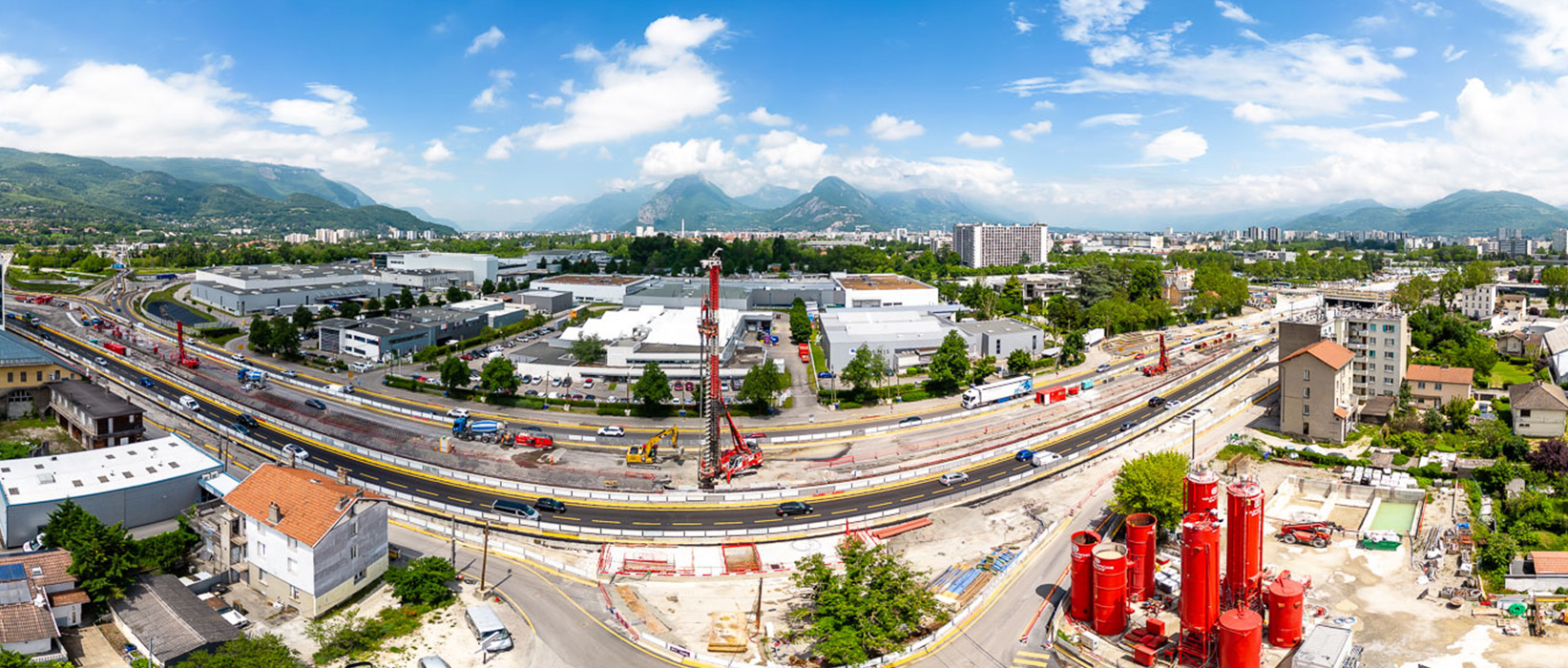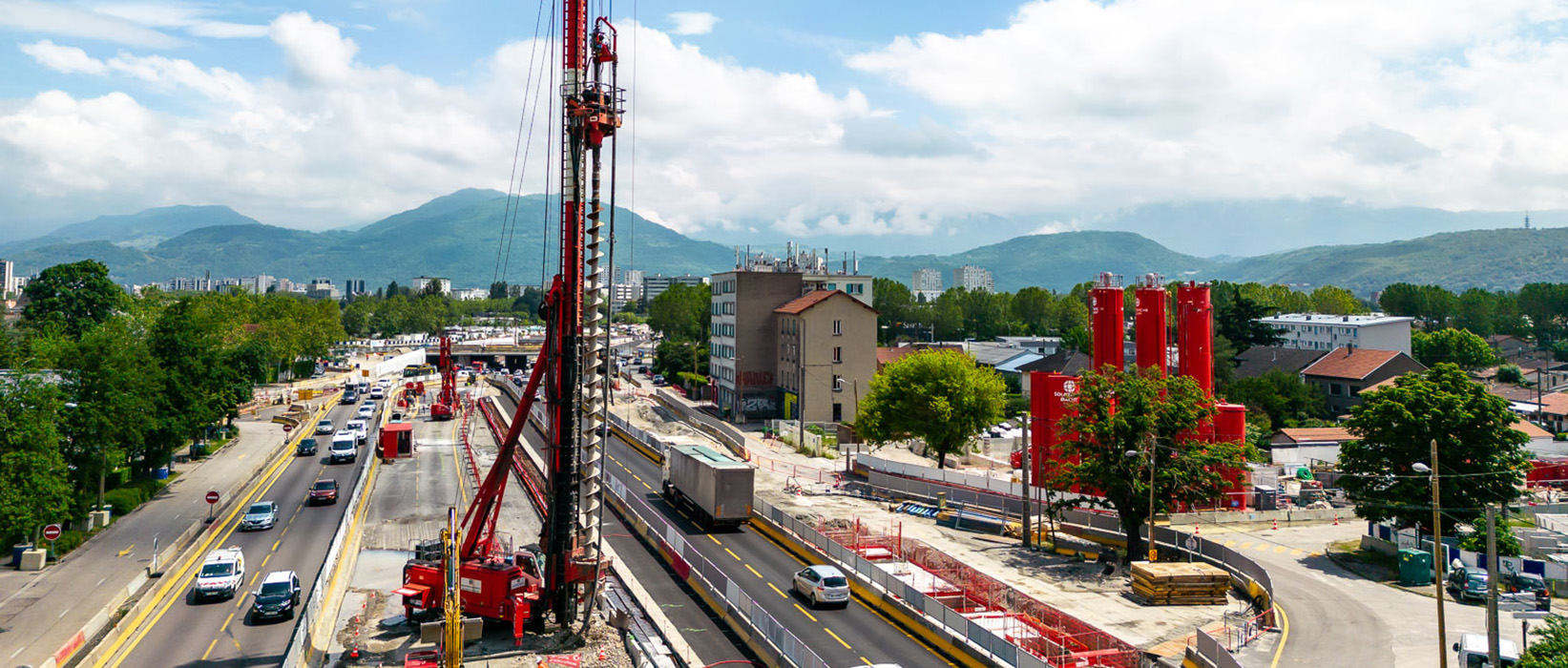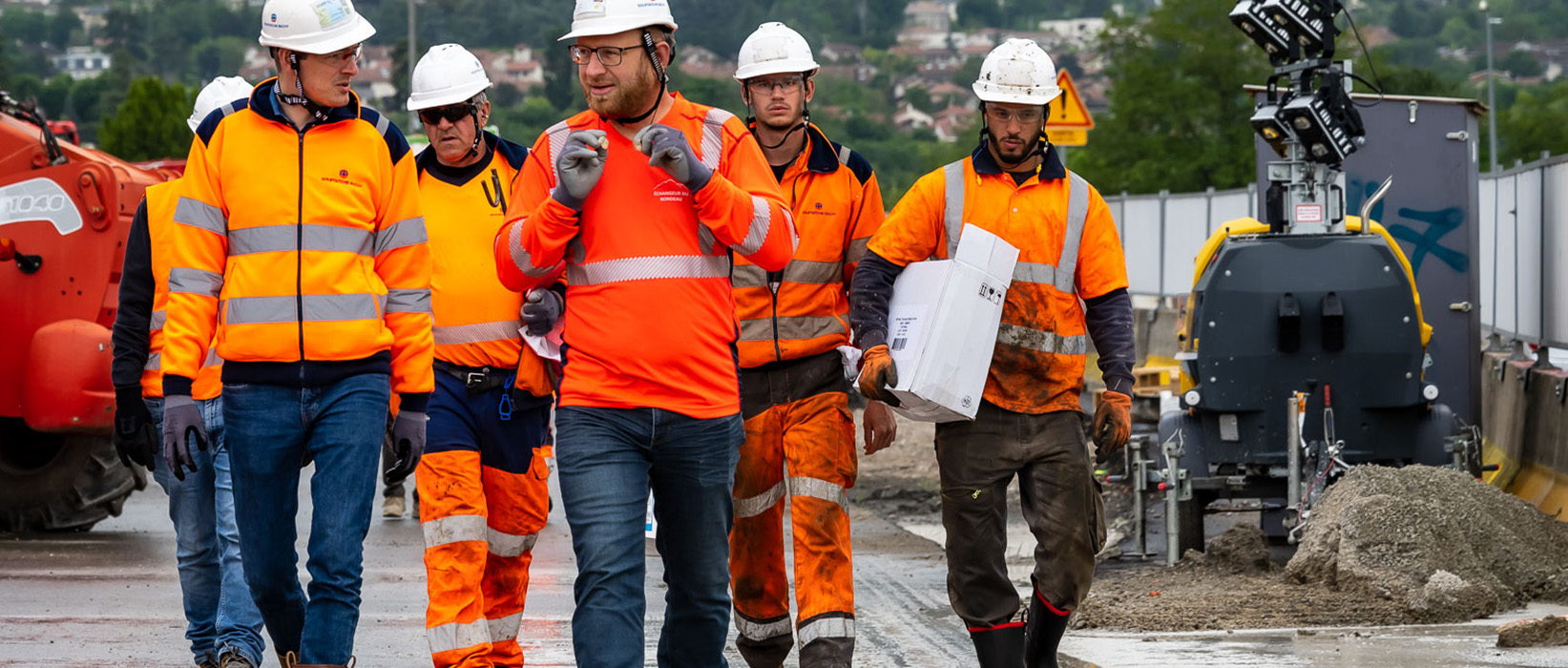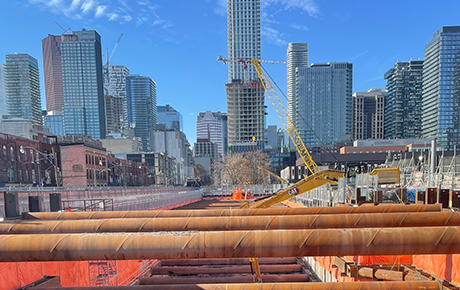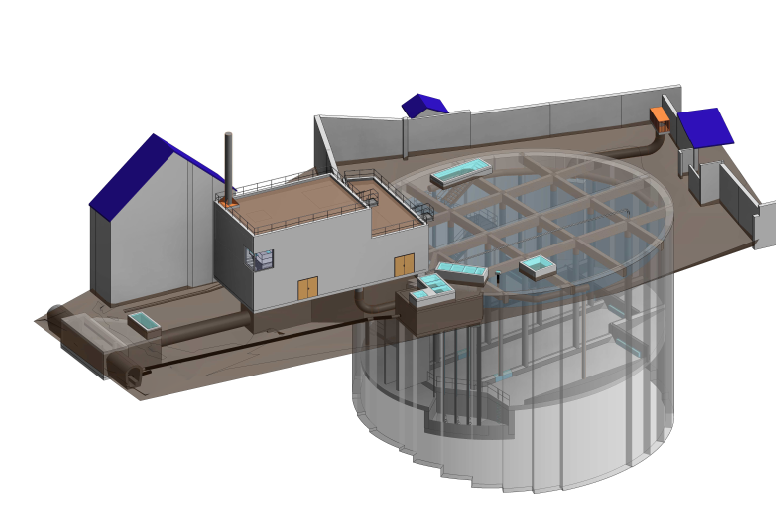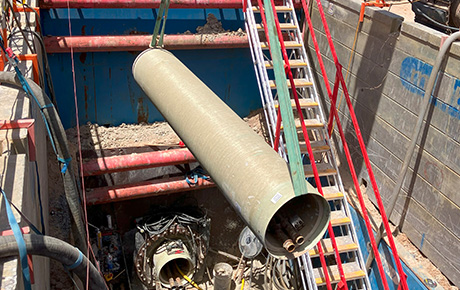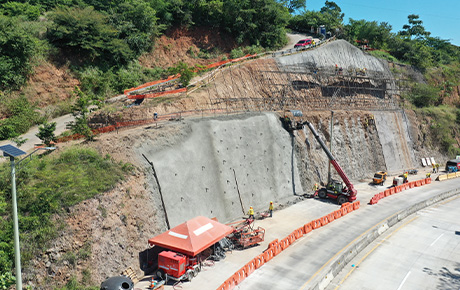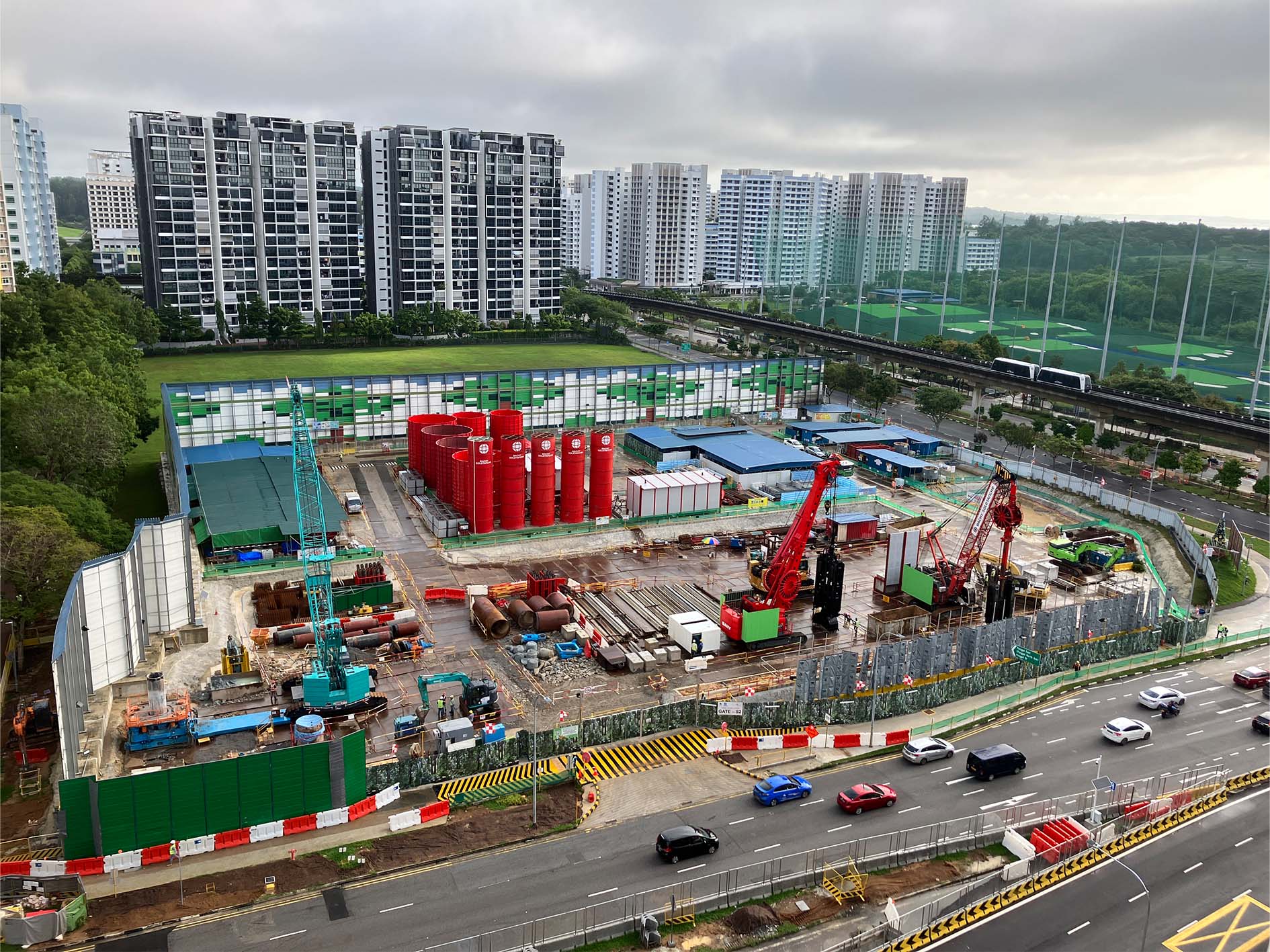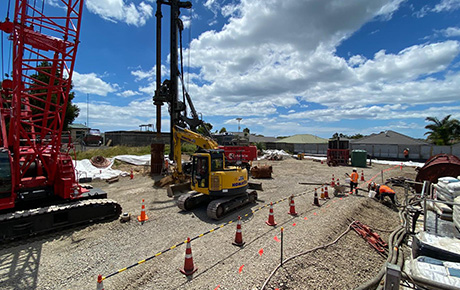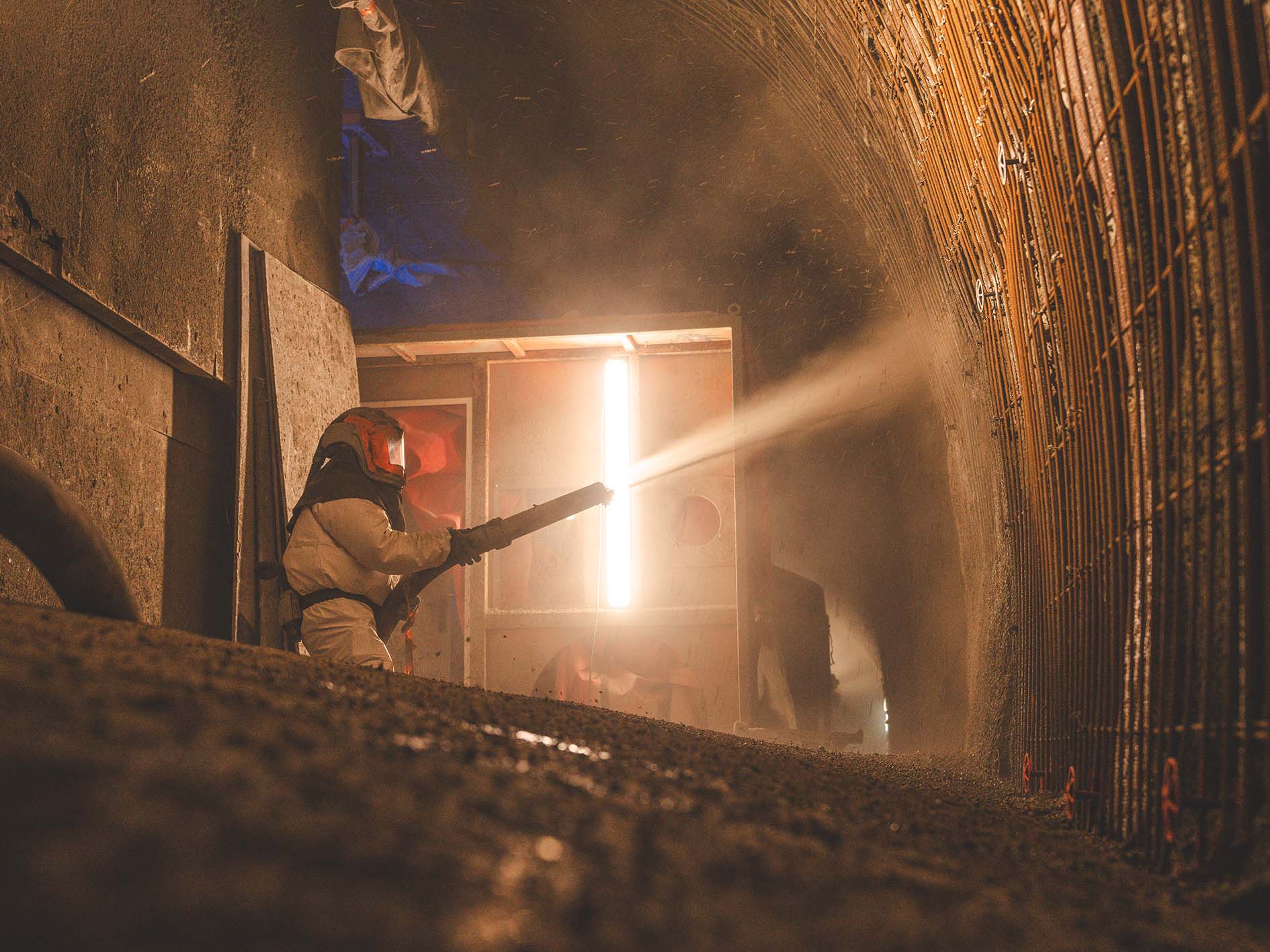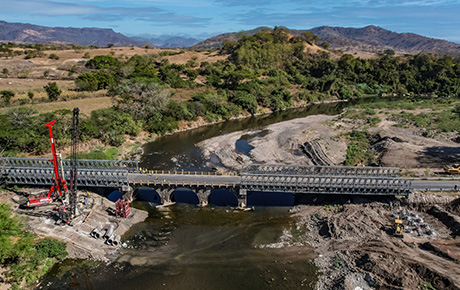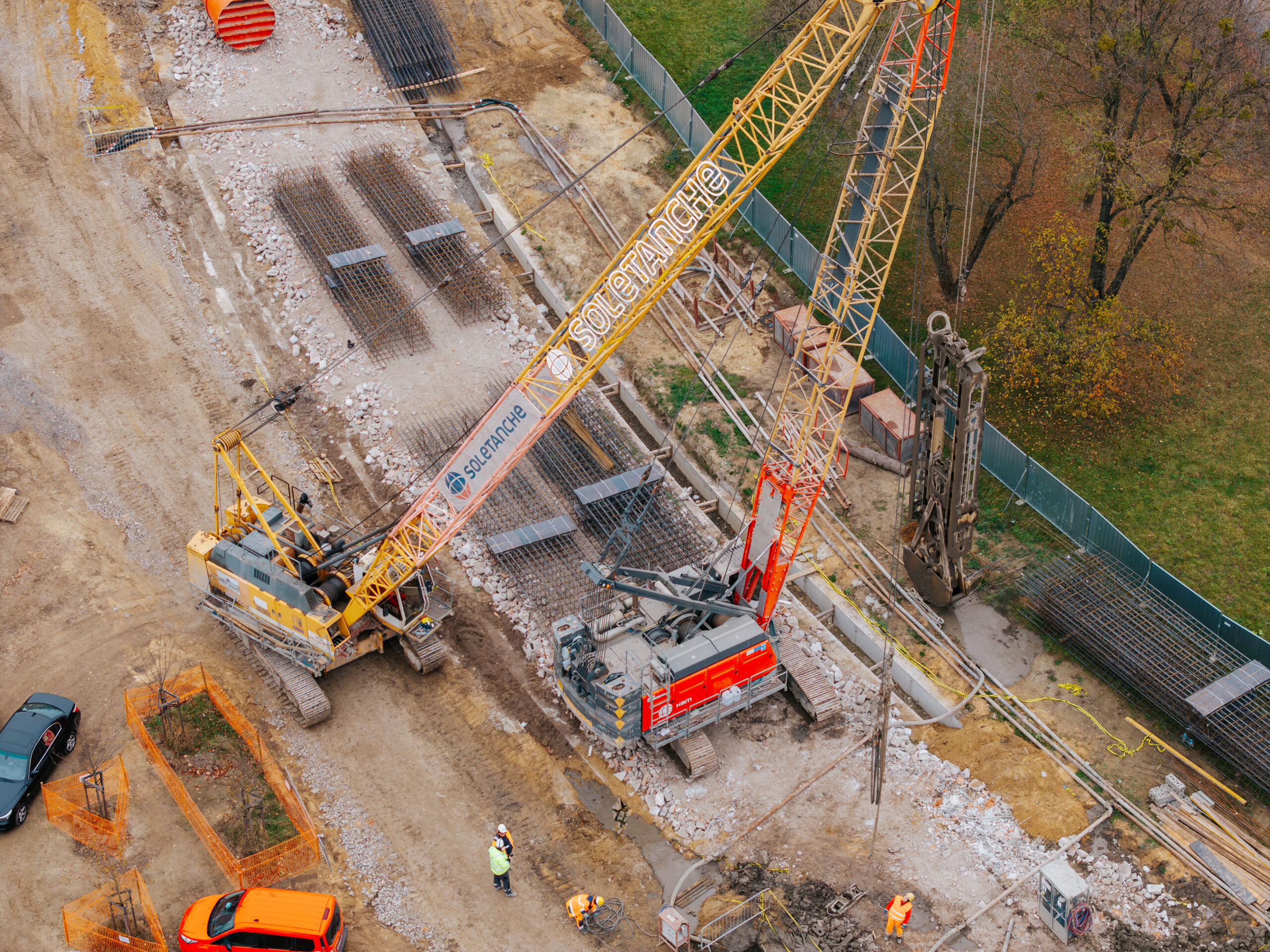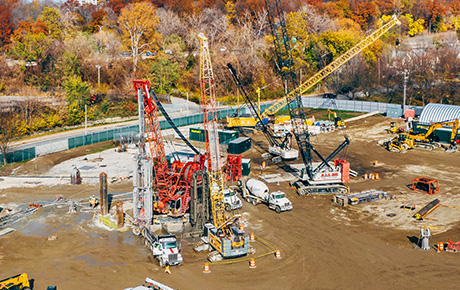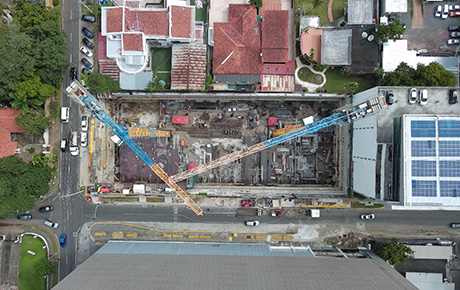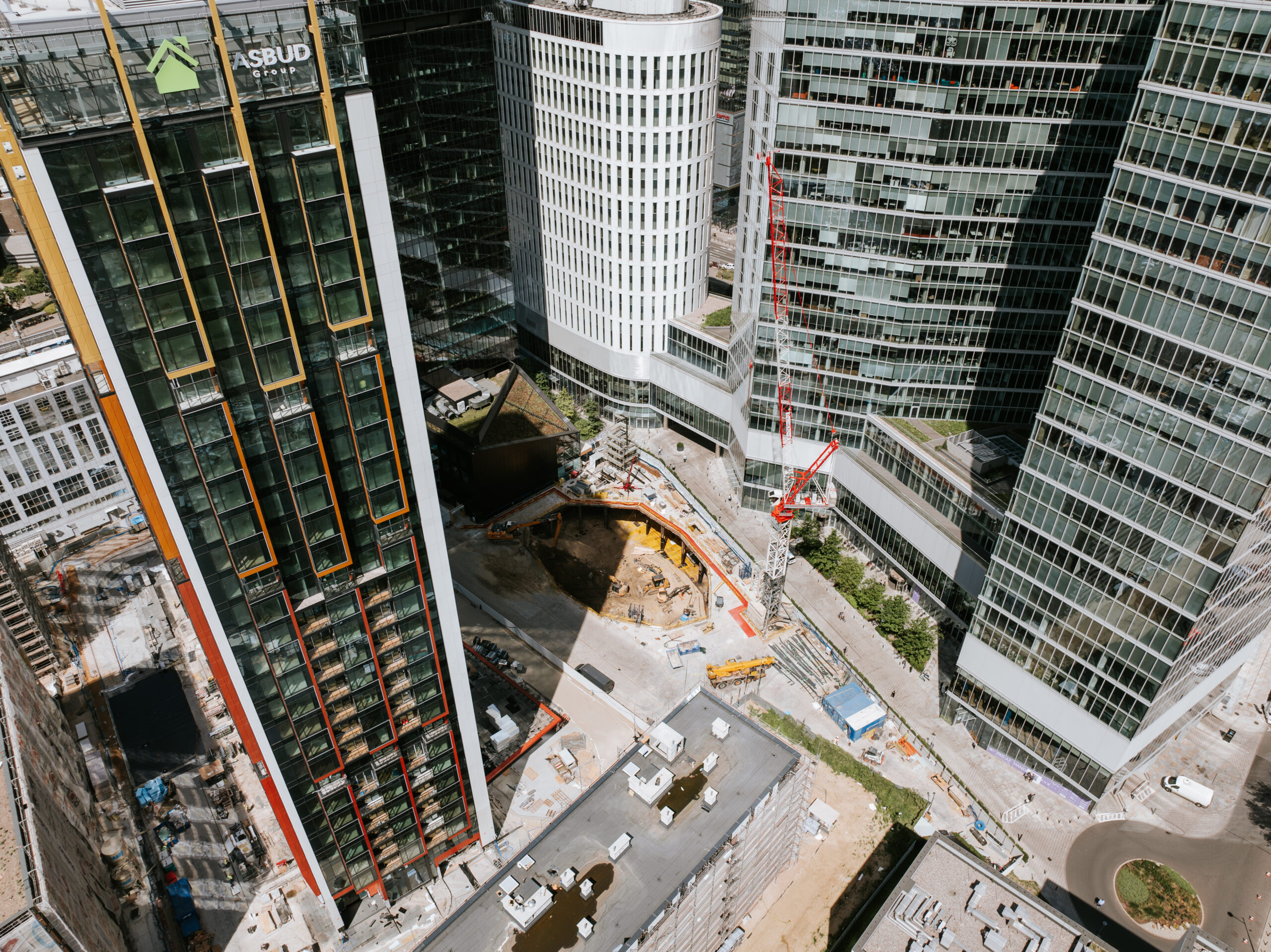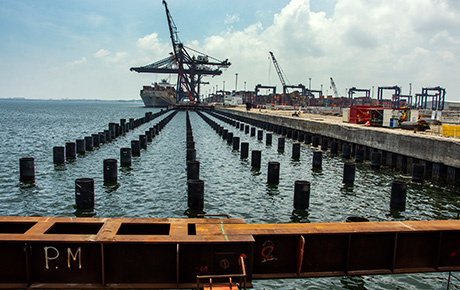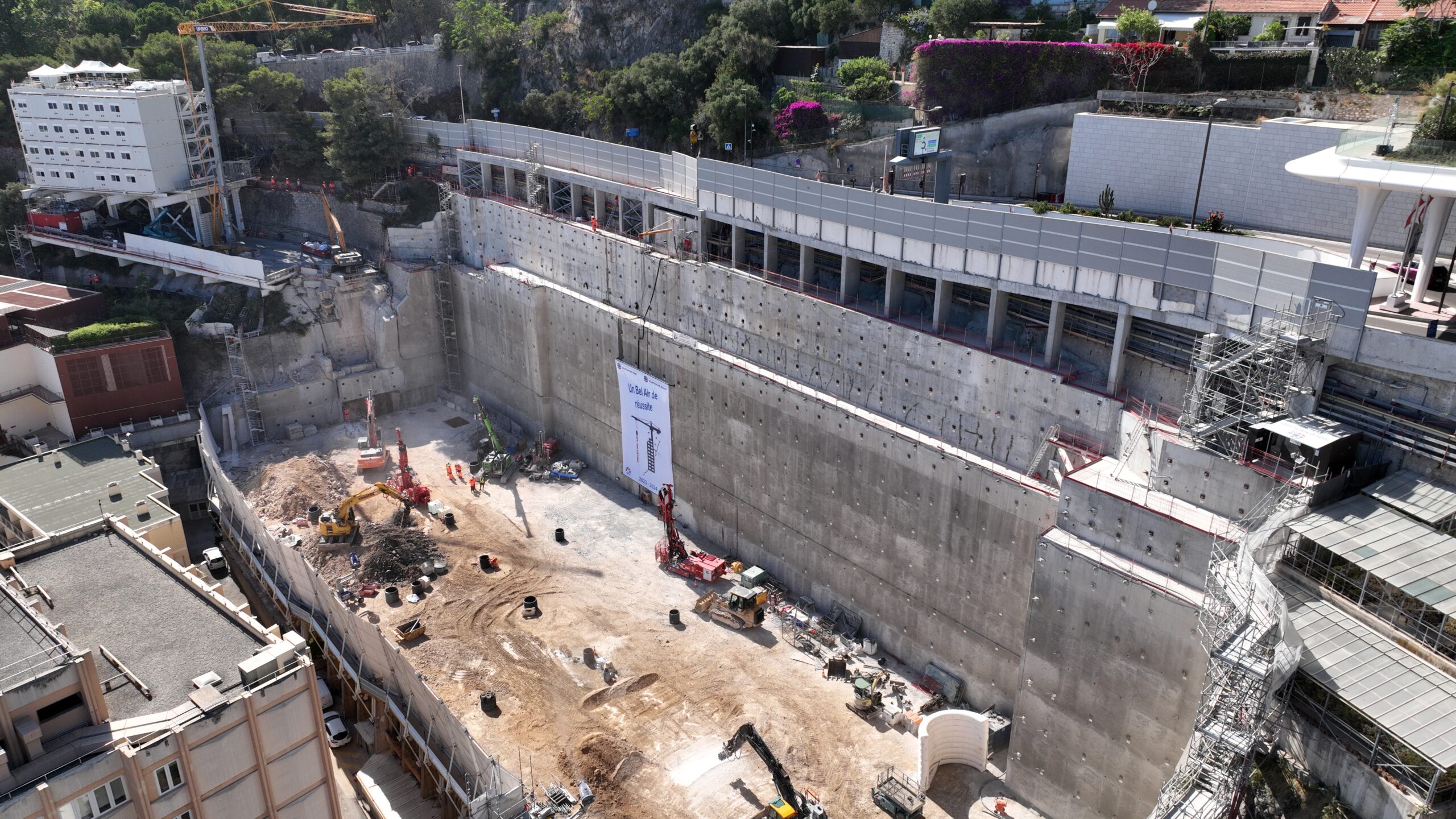27/11/2023
Special works on the Rondeau interchange reach final stages
For over two years now, teams from Soletanche Bachy France and Soletanche Bachy Fondations Spéciales have been working as part of a VINCI Construction consortium (Campenon Bernard Centre Est, Terelian, Eurovia and Sogea) on the redevelopment of the Rondeau road interchange in Grenoble.
The aim of the project is to improve traffic flow and safety at the strategic junction between the Rocade Sud and the A480 urban motorway.
Through traffic will be separated from local traffic flows by moving it into a 295 m-long cut-and-cover tunnel, created by roof and base slabs tied into diaphragm walls each side. A further 300 m of road running inside perimeter retaining walls will also be widened, enabling two new slip-roads to be brought into service.
This project is characterised by the complex phasing the works, which will allow the new tunnel to be built on the line of the existing ring road, without ever impacting the traffic.
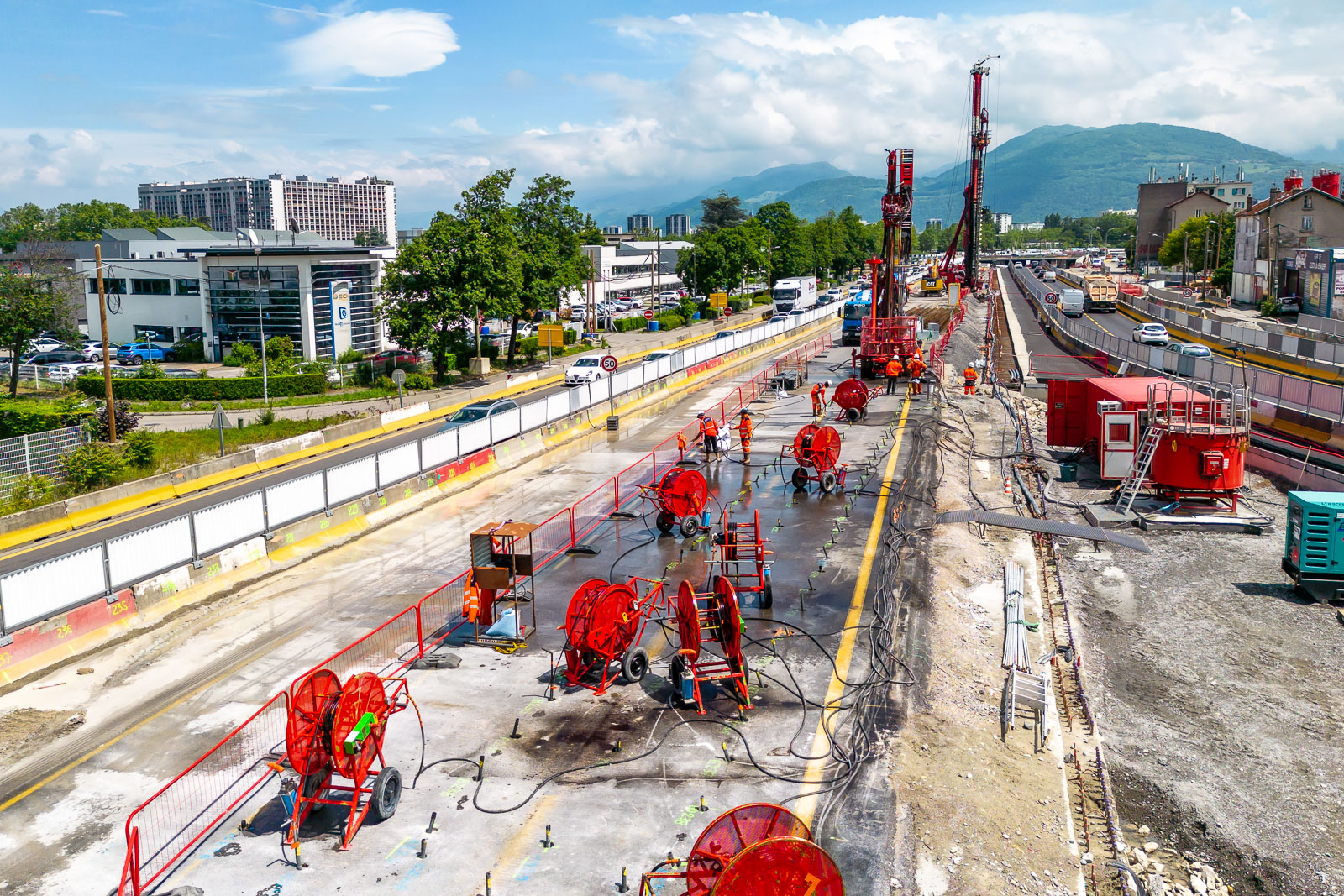
The year 2022 was marked by intense activity with the completion of the diaphragm walls (35,000 m² of 500 mm thick walls, excavated using the KS) and an initial phase of grouting (16 km of drilling, 5,000 m3 of grout injected). Activity then slowed down at the beginning of the year, to allow the civil engineering teams to complete the first part of the cover slabs, which were poured on the ground.
The special works teams took advantage of the opportunity to complete the work on the eastern part of the project, on the open retaining wall sections, with shotcrete and rendering on the diaphragm walls. This sector was handed over this summer, with the opening of the project’s first traffic lanes.
The end of spring 2023 coincided with the completion of the first phase of civil engineering work and the relocation of the ring road onto the newly-constructed slabs, freeing up a new area of the project.
This has enabled resources to be re-mobilised to complete the main special works, all of which are located in a reduced right-of-way, squeezed between the two directions of traffic on the ring road.
SBFS’s team built the final retaining walls for the project, using secant piles. An F2800 drilling machine equipped with Starsol tools drilled around 80No 820 mm diameter piles into the compact gravel.
In addition, the base of the future tunnel that had previously been under traffic needed to be grouted. To optimise deadlines, two C8 drills equipped with Hi’Drill heads worked together to install 7,500 m of sleeved tubes.
Subsequently, two SPICE computerised injection containers were used to inject 1,800 m3 of grout. The purpose of this grout-plug is to enable earthworks to be carried out in the cut-and-cover, where the bottom of the excavation is 2 m below the water table, while limiting pumping rates, despite the fact that the ground is naturally very permeable (k = 10-3 m/s).
Nearly forty employees from the two entities worked double-shifts in May and June to complete these operations under a tight deadline.
The operation was successfully completed on 30 June.
The civil engineering teams were then able to build the remaining 3,500 m² of roof slabs. Now it’s the turn of the earthmoving teams, who will start digging the tunnel in November. When completed, the tunnel should significantly improve traffic circulation for the 100,000 commuters who use this route every day.
